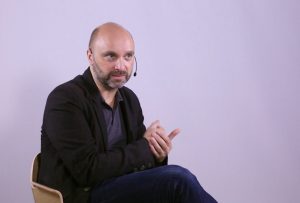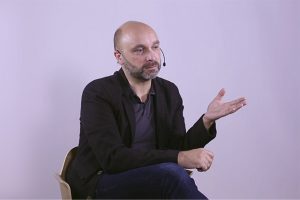Computational Modeling of the Brain
Neuroscientist Sylvain Baillet on the Human Brain Project, implementing the brain in silico, and neural networ...
What are the methods of brain activity registration? How to overcome noise in experiments of detecting brain activity? Arts and Sciences Distinguished Professor of Physics at Northeastern University Srinivas Sridhar speaks on technologies that will allow reading thoughts.
The brain actually emits electromagnetic signals and you can detect brain activity using electrical measurements like an electroencephalography, you can also detect magnetic fields of the brain in a technique called magnetoencephalography. With techniques like ours, which are becoming more precise, what they can do is they can lead to more precise information on the nature and type of activity in the brain. So the systems that we’re trying to build are very high density measurements around the scalp and then we’re combining them with a host of software tools to try to reconstruct brain activity.
The technologies that are emerging today will lead to new and better monitoring of, for instance, seizures for patience, even silent seizures and things like that, so that that will improve the quality of life of these patients also. There’re other applications that we’re looking at, for instance, how do you understand how people respond to visual stimuli of various kinds. Can you do pattern recognition? And for instance, when you’re looking at scenes, when there is an event that is occurring, how do people recognize that? And this is all manifesting itself through brain activity.
So what we do is to record many hundreds of signals and then analyze them and then correlate them to particular activities or brain states. There are some well-known parameters, you know, like alpha, beta, gamma waves, which are associated with various functions that they can increase. For instance, drowsiness can increase alpha waves. And even concentration can affect these patterns and they can enhance one component or the other. So looking at the spectral patterns of this signals you can identify, you can correlate it to specific activities and you can correlate visual stimuli to certain patterns, you can could correlate tactile or touch to certain patterns. So all of these have signatures in the electrical activity, which you can then try to decode and relate to what the stimulus is.

Neuroscientist Sylvain Baillet on the Human Brain Project, implementing the brain in silico, and neural networ...

Professor of Neurology, Neurosurgery and Biomedical Engineering at McGill University Sylvain Baillet on brain ...

Neuroscientist Karl Friston on different types of brain measurement techniques, people's reaction to emotional...